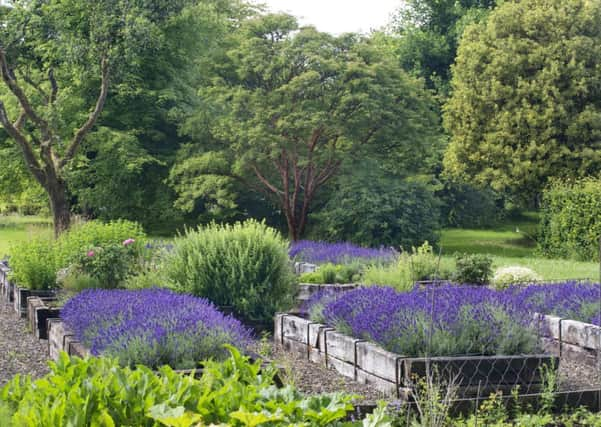Blossom in abundance at Kilmacolm


It means his bees will soon produce the most delicate honey he has tasted. Joe thinks this may be the reason why the grounds of many of Scotland’s old houses, including his near Kilmacolm, were laid out with lime avenues.
Duchal House takes its name from the confluence of two rivers and the now-ruined castle, which was built in the 11th century between the Blackwater and Greenwater rivers. When the castle was abandoned in the 18th century, the new house was located downstream, dating from 1710 and extended in 1768. It is grade A-listed and, unusually for a house of four storeys, is only one room wide. “My mother, who is 105, used to say that she liked the house so much that she would like to pat it,” says Joe.
Advertisement
Hide AdAdvertisement
Hide AdIn 1855, Duchal passed to the Shaw Stewart family, who used it as a shooting lodge, decamping from their home at Ardgowan for a few months. The landscaped and formal gardens cover five acres, which Joe looks after himself. His family have lived at Duchal since 1910, when it was bought by his grandfather, the first Lord Maclay, shipowner and shipping controller during the latter part of the First World War.
The garden was originally laid out by the Porterfield family in 1768. The lime avenue at the front stretches a mile and frames the house, and is bisected by a cross avenue. As well as these old trees there are ancient yews, Spanish chestnuts and beeches. In addition to the flower borders, the garden is particularly productive in fruit and vegetables. Joe’s parents reduced the vegetable garden to a more manageable size.
When Joe and his wife, Winks, moved in, in 1977, there was one full-time gardener. When he retired in the 1980s he was not replaced and Joe became a hands-on gardener. “It was very therapeutic from a demanding job in shipping,” he says, “as well as a great pleasure.”
In the last two years a part-time gardener, Sheena, works two days a week during spring and autumn. During this time they do all the borders twice and Winks manages the vegetable garden. In winter Joe prunes the two orchards and the fruit trees around the wall.
As you cross the bridge into the garden, there are two shrub borders of old varieties of roses with long herbaceous borders on either side. In the centre is the main lawn with freestanding clipped hollies with further shrub borders on either side mainly consisting of Azalea luteum. In the wings is the vegetable garden and the pear tree walk, with its yellow and white herbaceous borders and beyond is the lily pond. At the top of the end of the garden are the two apple orchards and against the wall is an espaliered apple, which is probably original and dates back to when the garden was first laid out.
The garden is mainly in straight lines, though is not at all austere. The lily pond and a line of pleached limes especially make architectural features out of plants.
The orchards and bee hives amid uncut grass bring softness and informality, while the wide variety of planting helps insect life to thrive. In the vegetable garden raised beds of lavender, made by Winks, create blocks of colour among herbs and old varieties of roses. The vegetable garden is highly fertile thanks to double-digging.
It’s not just a high-summer show: visitors in late spring, when the garden will be open to the public for an afternoon, will be able to enjoy Azalea luteum along with some of the rhododendrons such as concinnum pseudoyanthinum, R. fictolacteum, R. ‘Loderi King George’, and R. augustinii.
Advertisement
Hide AdAdvertisement
Hide AdThe undergrowth around the edge of the lily pond is populated with Iris Germanica ‘Black Dragon’, ‘Alcazar’, the stunning black Iris Chrysographes and the violet-blue I. Siberica. Alongside these are the primulas Pulverulenta and Florindae. In addition to a wide selection of hollies, both free-standing and clipped, there is a magnificent copper beech tree, as well as many species of trees such as the crab apple Malus Hupehensis, snowdrop tree Halesia Monticola, the saucer magnolia Soulangeana, and the whitebark magnolia (M. Hypoleuca). There are also the ornamental quinces Chaenomeles speciosa ‘Nivalis’ and ‘Moerloosei’.
Among Joe’s favourite plants are the ornamental trees eucryphia and malus, along with old varieties of roses such as R. Mutabalis. “I like a garden for all seasons,” Joe says, “which is productive as well as beautiful, and which blends with its landscape.” n
Duchal, on the B788 one mile from Kilmacolm, Renfrewshire, is open on from 2-5pm on Sunday 18 May under Scotland’s Gardens.